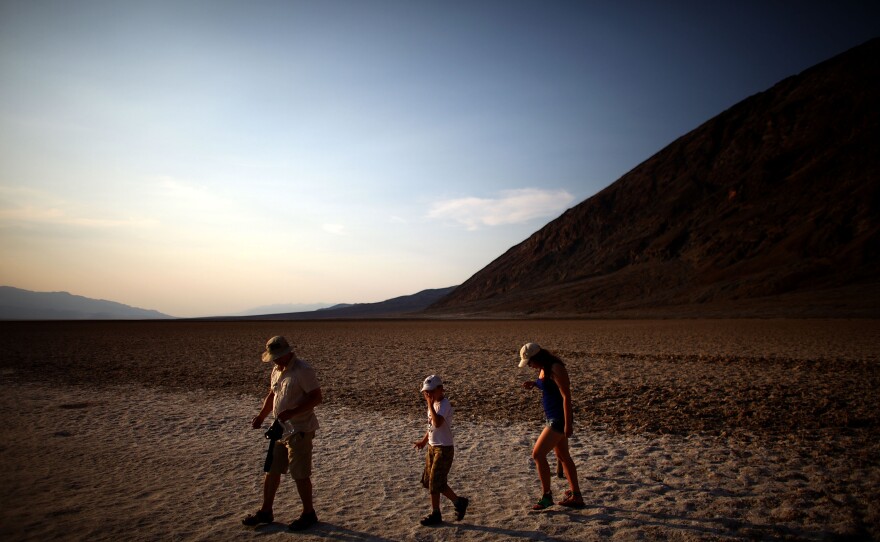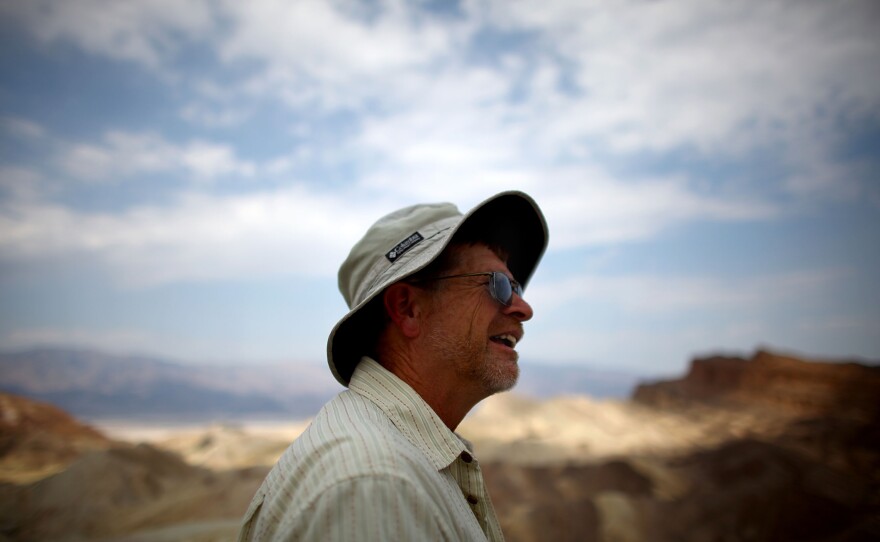
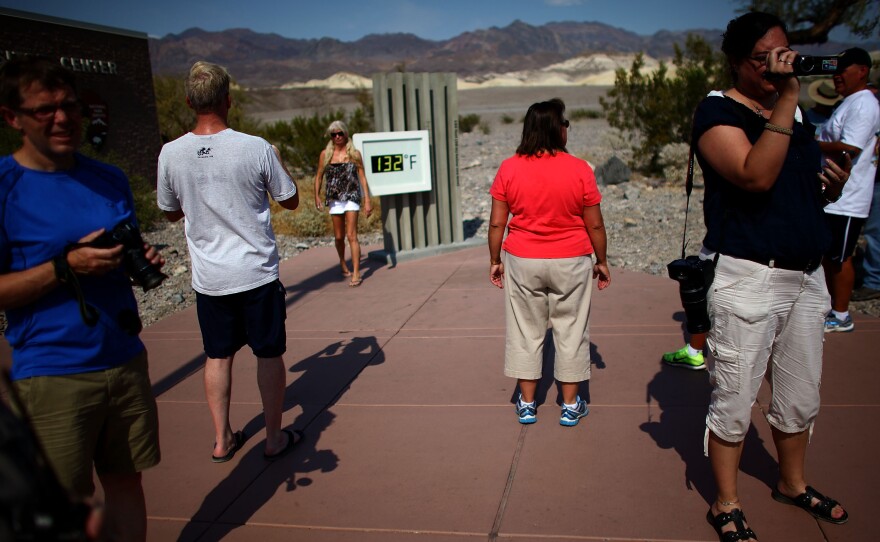
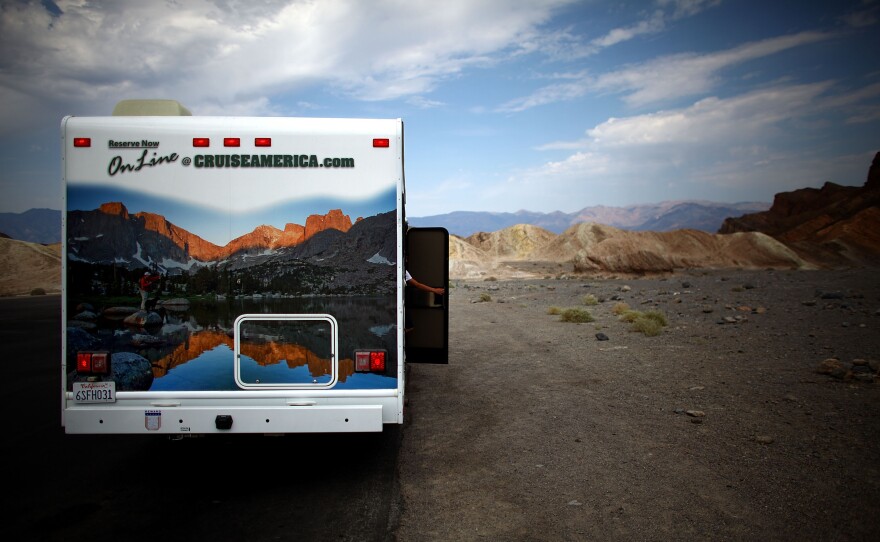
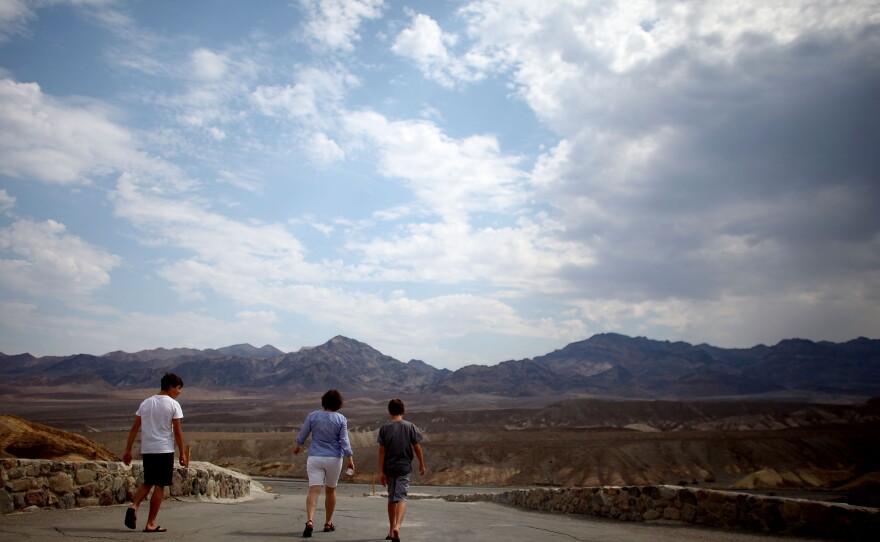
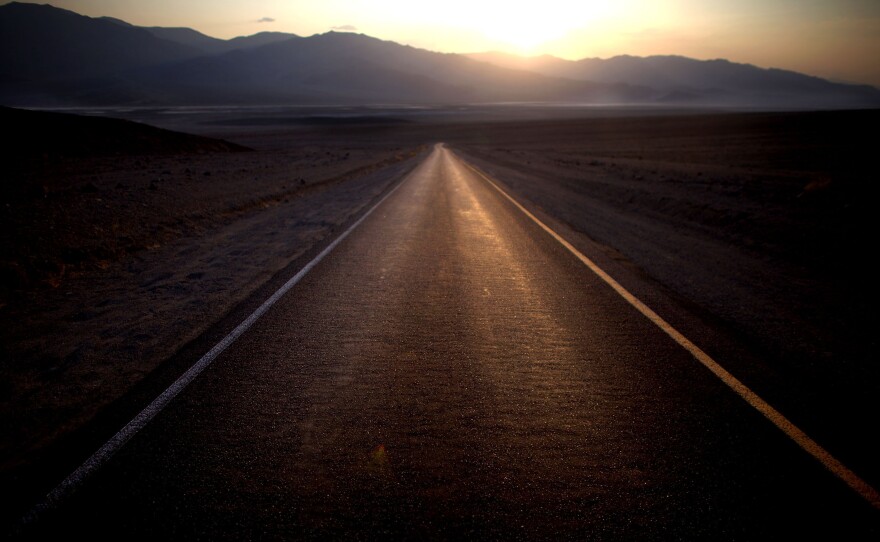
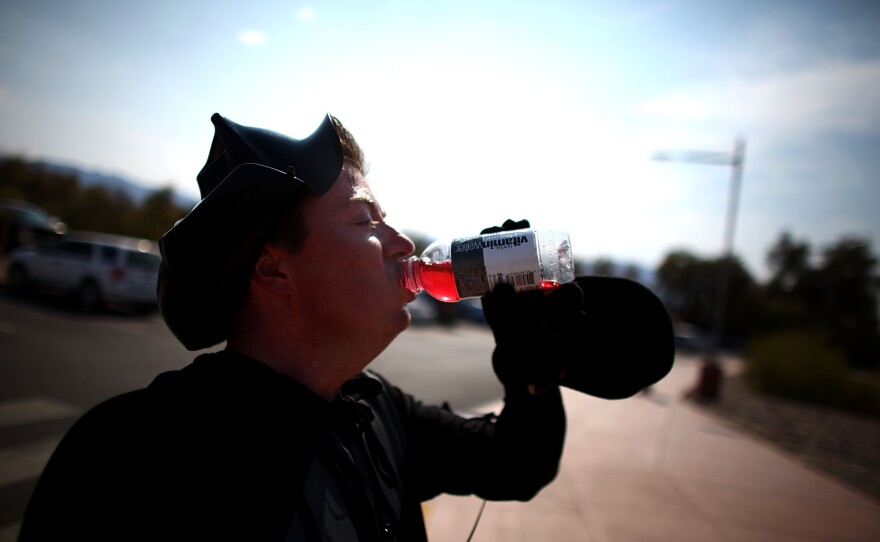
It's no secret that Death Valley, Calif., is one of the hottest, most unforgiving places on Earth come summertime. July 10 is the 100th anniversary of the hottest temperature ever recorded on the planet -- 134 degrees Fahrenheit -- and the heat is drawing tourists from all over the world to Death Valley.
Like Terminal 5 at London Heathrow Airport, Death Valley becomes a melting pot of foreign accents. On a recent afternoon, Belgian tourist Yan Klassens admires the view of the Badlands from Zabriskie Point, describing it as "nice, awesome and colorful."
But the 122 degree heat?
"Oh! Warm. Too hot! Very warm," the tourists say. "We like it!"
Klassen and his friends Yulka Derlay and Frieda Van Campenhotte are visiting from Belgium. Voluntarily.
"Always a wall of heat," Klassen says. "When you get out of a room or a building or a bus, with air co, and you get out, the wall of heat. Boof!"
It turns out these Belgians are among a throng of international tourists who come here in the dead of summer to experience this heat. In fact, July is now Death Valley National Park's busiest month. And you can't turn around without seeing Germans, Chinese or Kiwis. The term for this type of traveling is called "heat tourism."
Park ranger Charlie Callagan clutches two big water bottles. A wide brimmed hat shelters his face from the sun, but he's still drenched in sweat. He finds the idea behind "heat tourism" a little puzzling, but he's going with it. These tourists come to experience temperatures they can't back home, Callagan says, and won't stay for an extended period of time.
"It's one of the few places in the world where you can easily come out and experience temperatures into the 120s," he says, "and that's why we get visitors from all over the world."
Later in the afternoon, the mercury nears 129. A crowd gathers around a digital sign displaying the temperature outside the Furnace Creek Visitor Center. People are taking their pictures next to the sign.
But some of these tourists didn't come just for Death Valley. Some, like Richard Johansen of Sweden, are just passing through after a few days at Yosemite National Park.
"We were going to Las Vegas," he says. "We thought we could take the road through Death Valley." Before this trip, Johansen and his friends never felt anything hotter than 95 degrees.
The area feels and kind of smells like a sauna. A couple of mesquite trees behind the thermometer seem to be smoldering in the heat. It's all kind of a spectacle. Those sorry-looking trees and a sea of white socks, sandals and pale skin shine in the desert sun.
And then there's the guy in a Darth Vader costume. John Rice, the man behind the mask, is helping uphold Death Valley's reputation as a magnet for the eccentric.
"Well, I am attempting to set a world record for the hottest verified mile ever run by a human being," he says. "And I decided that wasn't tough enough, so I would do it in a Darth Vader costume, to just, you know, add to the spice."
Rice, who is from England and lives in Colorado, calls this mile the "Darth Valley challenge." Several scenes from Star Wars were filmed just down the road. Rice returns from his run down the Tatooine Desert in less than seven minutes.
Breathing heavily, Rice says the run was a little tough. "I probably went out a little fast, and then when my mask kept falling off, it slowed me down quite a bit." He adds that he trained extensively for this for more than a year, in a sauna.
Whether it's world record material, that's not clear yet. But the dedication is impressive.
Copyright 2013 NPR. To see more, visit www.npr.org.


